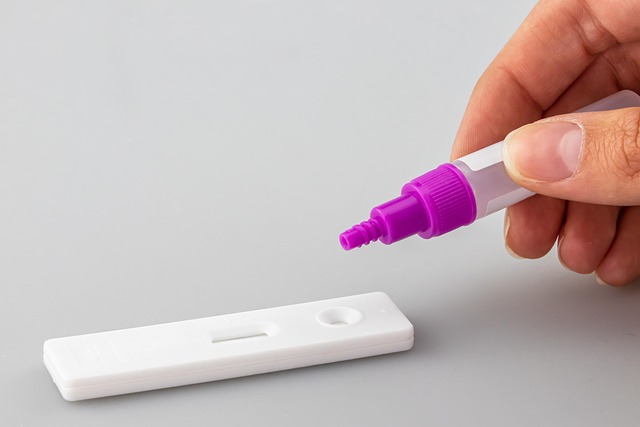Lead paint inspection for older homes in San Antonio is crucial to mitigate health risks and ensure worker safety. Professionals use advanced techniques to detect lead-based paint, focusing on chipping or peeling areas. Regular monitoring, adherence to regulations, and structured reports are key steps. Construction workers must follow strict guidelines, including containment procedures and PPE use, when dealing with lead materials in older homes.
In San Antonio, understanding lead paint hazards in older homes is crucial for worker safety and public health. This article provides a comprehensive guide to navigating lead exposure risks specific to the city’s housing landscape. From inspection procedures for thorough assessments of lead paint in older homes to safe handling practices for construction workers, we delve into essential guidelines. By adhering to established limits and protocols, San Antonio can ensure safer work environments, protect vulnerable populations, and minimize the impact of lead contamination.
- Understanding Lead Paint Hazards in San Antonio Homes
- Inspection Procedures for Older Houses: Step-by-Step Guide
- Safe Handling and Exposure Limits for Construction Workers
Understanding Lead Paint Hazards in San Antonio Homes

In San Antonio, lead paint hazards are a significant concern, especially in older homes built before 1978, when lead-based paint was commonly used. Conducting a thorough lead paint inspection for these properties is essential to ensure worker safety and compliance with environmental regulations. Professional inspectors employ various methods, including visual assessment, X-ray fluorescence (XRF) analyzers, and scrapings for lab analysis, to identify the presence and extent of lead-based paint.
These inspections are crucial for identifying risk areas such as chipping or peeling paint, which can release toxic dust containing lead into the air. Workers in these homes must take precautions like wearing personal protective equipment (PPE) and using proper ventilation to minimize exposure. Regular monitoring and remediation are necessary to mitigate health risks associated with lead paint, ensuring both a safe workplace and a healthy living environment for San Antonio residents.
Inspection Procedures for Older Houses: Step-by-Step Guide

Conducting a lead paint inspection for older homes in San Antonio is crucial for ensuring worker safety and adherence to environmental regulations. Here’s a step-by-step guide tailored for this unique context:
1. Preparation: Before beginning, assemble necessary tools including protective equipment (PPE), a lead paint testing kit, a camera, and detailed records of the property’s history and previous inspections. Familiarize yourself with local lead safety regulations and guidelines specific to San Antonio.
2. Visual Inspection: Start by conducting a thorough visual assessment. Look for signs of peeling or chipped paint, especially in areas prone to wear and tear like windowsills, doors, and walls. Note any noticeable discoloration, blisters, or cracking. Document all findings with photos, noting the location, severity, and potential risk level.
3. Sample Collection: Using appropriate sampling techniques, take paint scrapings from suspect areas. Ensure that each sample is clearly labeled with the room and location. Follow manufacturer instructions for using the lead paint testing kit to determine if samples contain lead above actionable levels (typically 0.5 mg/g).
4. Laboratory Analysis: Send tested samples to a certified laboratory for comprehensive analysis. Await results, which will confirm the presence and concentration of lead in each sample. This data is essential for risk assessment and guiding remediation strategies.
5. Documentation & Reporting: Compile all inspection findings into a detailed report. Include visual documentation, test results, and recommendations for remediation based on lead levels. Share this report with relevant stakeholders, including property owners, contractors, and local health or environmental authorities.
Safe Handling and Exposure Limits for Construction Workers

Construction workers in San Antonio, especially those engaged in renovation projects involving older homes, must be aware of lead safety guidelines when dealing with lead-based materials, such as lead paint. These workers are at a higher risk of exposure due to the potential for dust and particles to become airborne during demolition or repair processes.
In light of this, strict exposure limits have been established by regulatory bodies to safeguard construction workers’ health. The Lead Paint Inspection process plays a crucial role in ensuring compliance with these limits. This involves thorough assessments to identify lead-based paints and proper containment procedures to minimize dust generation. By adhering to recommended safety protocols, including the use of personal protective equipment (PPE) and appropriate ventilation systems, construction workers can effectively manage their exposure while working on older structures in San Antonio.
In conclusion, ensuring lead safety in San Antonio’s older homes is paramount for both homeowners and construction workers. By understanding lead paint hazards, adhering to proper inspection procedures, and implementing strict handling guidelines, we can mitigate risks effectively. Regular lead paint inspections for older homes, along with knowledge of safe exposure limits, are essential steps towards creating healthier environments and protecting those who work with or live in these properties.
